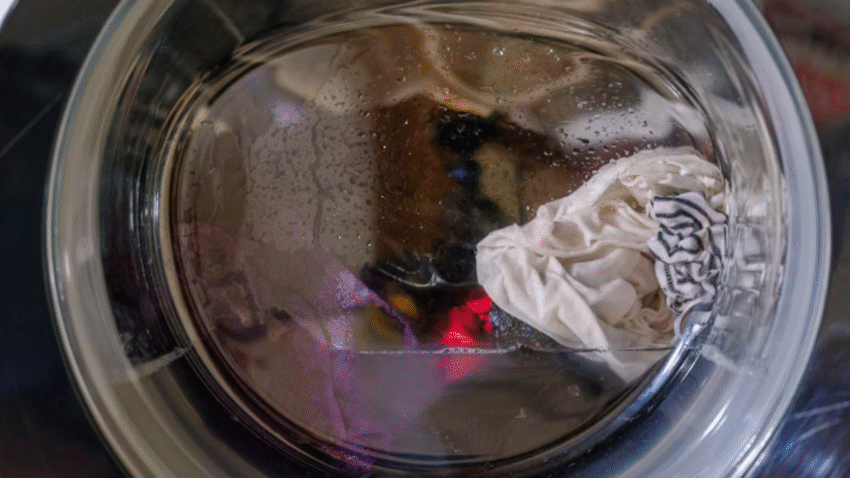Introduction
Small spaces don’t have to mean sacrificing laundry convenience. With careful planning and the right setup, you can fit a fully functional washer and dryer into a closet, corner, or tight laundry nook. Learning how to install a washer and dryer in a small space will help you maximize every inch, keep the area efficient, and avoid common mistakes that lead to cramped, cluttered, or unsafe installations.
Why Installing in a Small Space Matters for Your Laundry Room
Space-saving installations:
- Allow in-home laundry convenience in apartments, tiny homes, and small houses.
- Make better use of underutilized corners, closets, or hallway niches.
- Increase home value by adding laundry access without a full remodel.
- Reduce laundry day stress by keeping appliances organized and accessible.
When done correctly, you’ll maintain proper airflow, protect walls and floors from moisture, and keep laundry supplies within arm’s reach—even in the smallest of spaces.
Step-by-Step Guide to Installing a Washer and Dryer in a Small Space
1. Measure the Space Accurately
- Measure width, depth, and height of the available area.
- Account for door swings, ventilation, and hookups.
- Leave at least:
- 1 inch on each side of the units
- 4–6 inches behind for hoses and vents
- 1 inch on top for airflow (stacked units may require more).
Tip: Check appliance specs before purchasing—compact and stackable models are ideal for small spaces.
2. Choose the Right Appliance Type
A. Stackable Washer/Dryer Sets
- Great for closets and narrow spaces.
- Install the dryer above the washer using a stacking kit for stability.
B. All-in-One Washer/Dryer Combos
- Wash and dry in one drum.
- Saves space but may have longer cycle times.
C. Compact Side-by-Side Units
- For spaces under counters or in mudroom nooks.
3. Prepare the Space
A. Flooring
- Ensure the floor is level and can support the appliance weight.
- Use a waterproof mat or tray under the washer to catch drips.
B. Walls & Protection
- Install moisture-resistant wallboard or use a splash guard behind the washer.
- Consider a vented louvered door if enclosing in a closet for airflow.
C. Hookups
- Verify water supply valves, electrical outlets, and dryer vent access are present.
- For electric dryers, confirm you have a 240V outlet. For gas dryers, ensure a gas line and shut-off valve are accessible.
4. Install the Washer
- Position the Washer
- Place the washer near hookups, leaving space behind for hoses.
- Connect Water Hoses
- Attach hot and cold water hoses to the correct valves.
- Hand-tighten, then give a quarter turn with pliers—do not overtighten.
- Attach the Drain Hose
- Insert into the standpipe or laundry tub, securing with a zip tie or clamp to prevent leaks.
- Level the Washer
- Adjust the feet so it sits solidly without rocking.
5. Install the Dryer
A. For Electric Dryers
- Plug into the 240V outlet.
- Attach the vent hose to the dryer and wall vent, securing with clamps.
B. For Gas Dryers
- Connect the gas line using a flexible stainless steel connector.
- Check for leaks with a soapy water solution—bubbles indicate a leak that must be fixed before use.
- Connect the vent hose as above.
6. Stacking (If Applicable)
- Use the manufacturer’s stacking kit to secure the dryer above the washer.
- Have a helper—dryers are heavy and need to be lifted into position carefully.
7. Test the Installation
- Run the washer through a quick cycle to check for leaks.
- Run the dryer for a few minutes to confirm heat and airflow.
- Check that the vent is exhausting properly outside.
Common Mistakes to Avoid
- Skipping Vent Clearance
- Compressing the vent hose can restrict airflow, increase drying times, and create a fire hazard.
- Ignoring Leveling
- An unlevel washer will vibrate excessively, making noise and damaging flooring.
- Overlooking Moisture Protection
- Bare drywall behind washers can suffer water damage. Use waterproof backing or splash guards.
- Using the Wrong Hoses
- Old rubber hoses can burst. Use braided stainless steel hoses for durability.
- Blocking Airflow in Closet Installations
- Always provide ventilation to prevent overheating and moisture buildup.
Extra Laundry Tips & Hacks for Small Spaces
- Install Wall Shelves Above Units – Store detergents, baskets, and supplies without taking up floor space.
- Use a Pull-Out Countertop – Create a folding area above a front-load washer/dryer.
- Slide-Out Storage Carts – Narrow carts fit between appliances and walls for easy access to cleaning supplies.
- Magnetic Hooks & Baskets – Attach to appliance sides for hanging laundry bags or tools.
- Opt for Quick-Connect Hoses – Makes seasonal disconnections faster in tight spots.
For space optimization, check out our guide on How to Use Vertical Space in a Small Laundry Room.
Conclusion
Knowing how to install a washer and dryer in a small space lets you enjoy the convenience of in-home laundry without sacrificing valuable square footage. With accurate measurements, the right appliances, and proper installation techniques, you can create a compact yet fully functional laundry station.
📌 Extra Tip: Plan for organization at the same time you plan for installation—smart storage will make even the smallest laundry space work like a full-sized room.
